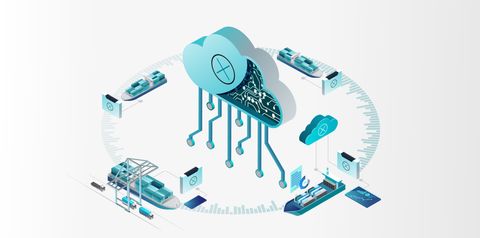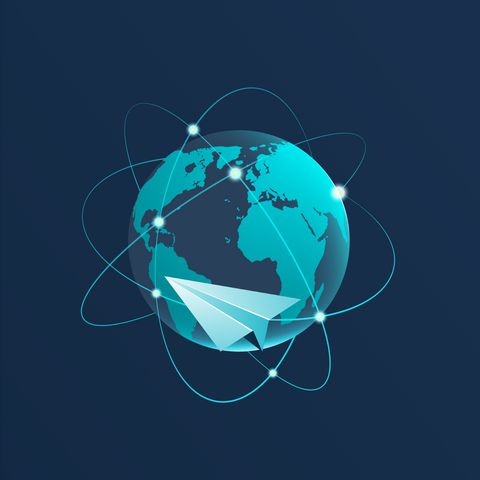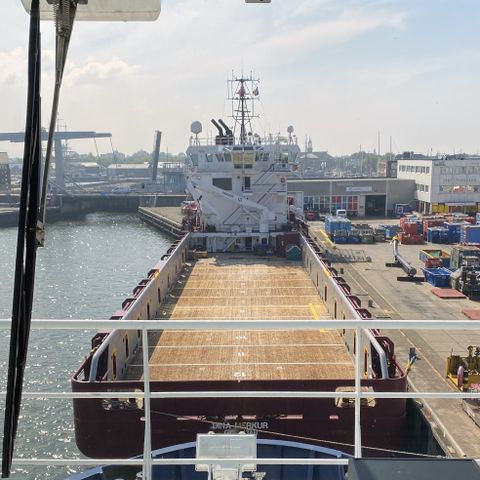
A version of this article was first published on Riviera Maritime Media.
Digital transformation is a global megatrend transforming the business landscape. However, its impact in the maritime industry has so far been limited. This is not due to a lack of interest or initiatives. Nor is it because we don’t agree how potentially valuable digital transformation will be. Rather, it is mostly due to two key challenges; collaboration and connectivity - challenges which are common to digital transformation anywhere, but which have very specific implications for the maritime industry.
In this article, we will dive into how these issues are linked, how they can be solved together, and how maritime organizations with the right approach can take full advantage of emerging digital technologies.
Collaboration challenges
Digital innovation needs collaboration for a number of reasons, but in particular, to keep up with the pace of innovation, and because disruptive technologies change how companies compete. This forces us to re-evaluate our value chains, build new partnerships, and find new business models.
Many established maritime players have launched initiatives to accelerate collaboration and digital innovation. There have been efforts to develop standards for data exchange for smart containers, autonomous shipping, and more, and many players have launched their own programs with in-house development teams. But what we often see is that talk of standards is slow and efforts to develop digital solutions by established players fail to gain widespread adoption. The nature of the industry means that other established players are unwilling to adopt solutions built by competitors, and there may even be a degree of resistance to transparency in the industry.
Another potentially valuable area for collaboration is between corporates and startup ecosystems. In recent years, there has been an increase in the number of startups, venture capital investments, accelerators and incubators. However, due to a range of reasons, including oversupply, pressure on margins, an unfamiliarity with agile and iterative development processes, clash of cultures, and a different appetite for risk, many collaboration attempts fail. Startups that fail and are taken over by corporates or are taken over to create synergies meet the same fate as those solutions developed in-house.
Connectivity challenges
Data is the fuel that drives digital innovation, or, more specifically, massive data sets from people, things and processes that are analyzed to detect trends and patterns, make predictions, or automate business processes. The benefits of this are obvious. But not as well understood is that it is actually very difficult to make the connections needed to access the data.
According to research by MuleSoft, legacy infrastructure and systems are the most frequently reported challenges to digital transformation. And according to Gartner, half of the costs of implementing the Internet of Things - an essential component of accessing data - will be driven by connectivity. These findings do not even take into account the very specific challenges we face in the maritime industry, around limited internet connectivity, constantly-moving assets, dated network infrastructures, and multiple incompatible equipment data protocols.
Before digitalization in the maritime Industry can reach its full potential, and because many digital innovation initiatives rely heavily on the effective use of operational data from ships, we must find a way to connect our maritime assets, people and processes.
A game changer - the vessel API
The go-to technology for making these connections in today's digital world is the Application Programming Interface (API). APIs allow software to communicate and share data with other software. They provide a flexible integration layer where you can plug in and out data sources and decouple complex systems.
The strategic importance of APIs hasn’t escaped the maritime industry’s attention. In fact, more and more software tools have their own dedicated APIs, which allow you to integrate those solutions into your wider application landscape. This is a great start, and a development that should be encouraged.
But what if you had an API for vessels, that could open up the data flow of machines and humans across your whole fleet, and make it accessible to you?
In fact, this potential has already arrived. Emerging maritime technology providers are developing edge solutions that support a wide range of maritime data protocols, which also have the ability to run applications used by the crew. These emerging providers are connecting crew, making vessels smart, and providing users a single endpoint to all their data, establishing a truly universal connection to our maritime assets, people, and processes.
APIs are the perfect model for those exchanges because they provide a definition of both the provider and the consumers, as well as provide a way for the interactions to be secured and managed.
Connectivity, collaboration, and the maritime API economy
In recent years, the place of APIs in the business landscape has radically expanded, having a dramatic influence on the growth of some of the biggest and fastest-growing companies in the world. While it was originally a technology to enable connectivity, organizations are now leveraging APIs to collaborate by sharing their data and services, enabling partners to build powerful new business models and unlock vast amounts of value.
Let’s look at an example.
One of the most impactful stories of API-powered hypergrowth is an app you probably use yourself - Uber. If you consider the technology within the Uber app, it becomes obvious that it would be incredibly complex and expensive for a single organisation to develop all the mapping, payments, messaging, and other technology at play in each ride. In fact, the Uber product consists of a number of seamlessly integrated APIs, the operating system (iOS, Android) for positioning, MapKit and Google Maps for route calculations and maps, Adyen and Braintree for payments, Cloud Messaging for push notifications, and Mandrill for receipts, among others. Orchestrating these APIs - not inventing new technology - is what enabled Uber to achieve a scale that would have been impossible only a few short years before.
The Uber example demonstrates that working together using APIs, incredible innovation is possible. APIs lower the barriers to collaboration, while at the same time offering a way to work together at scale. With the right partners, you can start working together on a Friday afternoon, on a small scale project with very little overhead.
Our API-powered future is just beginning
Maritime businesses are just beginning to leverage vessel APIs to kick-start collaboration, sharing data and services and integrating with customers and supply chain partners. Possible use cases to leverage APIs that we are seeing include fleet performance optimization, operational analytics, maintenance decision support, predictive maintenance, compliance and for automating business processes (for example, using fleet data for your planning, billing and maintenance tools), and more. These are all very exciting areas to be explored. But the most exciting part is that the real potential of API-powered connectivity and collaboration is yet to be discovered. Who knows - with the right collaboration and connections, we may even have Uber-sized opportunities ahead of us!
Would you like to learn more about how Onboard’s Vessel API can help connect your business? Get in touch.

